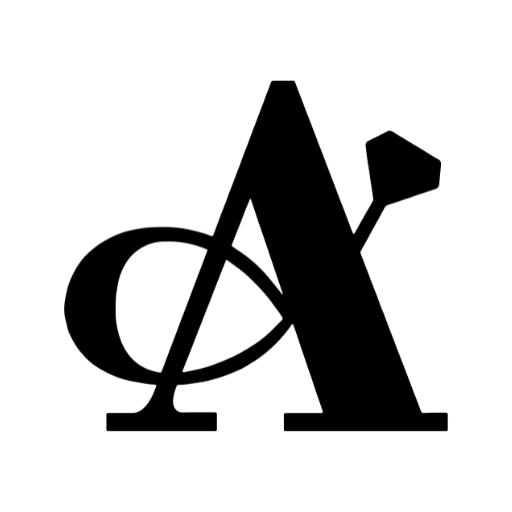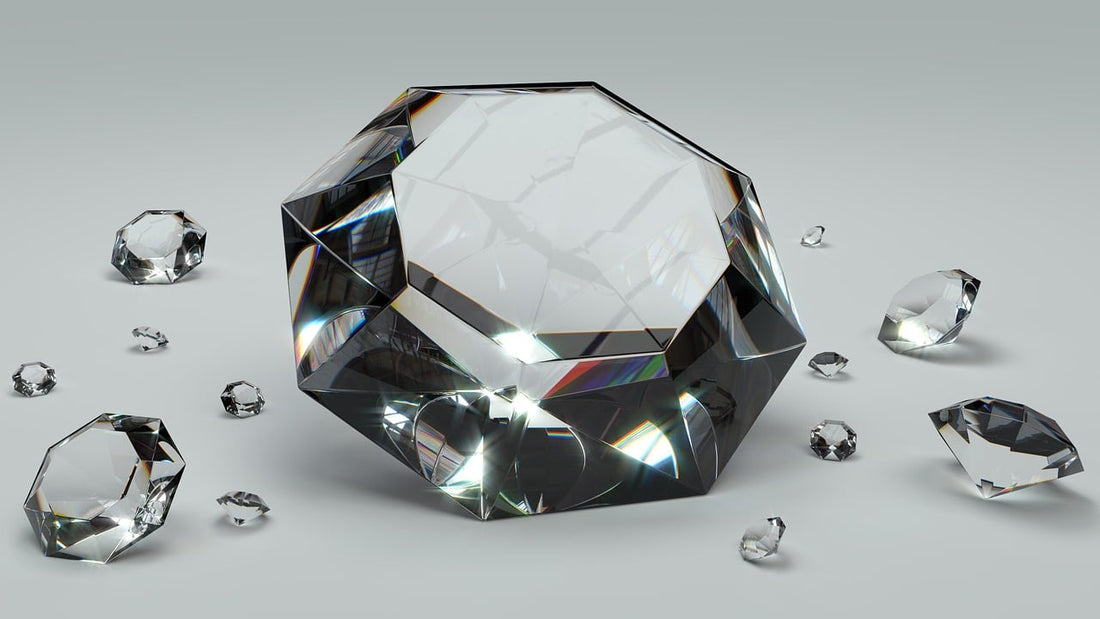Things You Need To Know Before Buying Diamond Jewellery
Knowing where to start when buying diamond jewellery can be a minefield, to say the least. You hear things about ‘choosing the best colour’ and ‘making sure the clarity is right’, which can lead to a confusing start before you have even started browsing diamond jewellery. So I asked our jewellery experts at A Jewellers and posed some diamond-related questions to them, the answers lead us here, to the only diamond guide you will ever need to read when you’re next buying diamond jewellery.
Choosing The Right Diamond Shape
Choosing the right diamond shape is a pivotal decision when selecting the perfect piece of jewellery or when deciding what to go for when it comes to a custom jewellery piece. Each shape possesses its own unique characteristics, reflecting different styles. Among the most popular types are the classic brilliant-cut (or round-brilliant as it's known by some), coveted for its timeless aesthetic and maximum sparkle, due to its 58 facets, or in simpler terms, 58 sides, all of which reflect light beautifully. The princess cut offers a modern twist with its square shape and brilliant facets, while the emerald cut exudes sophistication with its sleek lines and understated glamour.
For those seeking a romantic vintage appeal, the cushion cut's soft curves and sparkling facets are a popular choice. Other sought-after shapes include the radiant cut, pear cut, oval cut, and marquise cut, each offering its own distinctive beauty. Consider factors such as personal style, finger shape (in the case of a ring), and budget when making your selection. At the end of the day, diamond shape mostly comes down to your individual taste and preferences.
Diamond Cut
Diamond cut is a crucial aspect of a diamond's beauty, influencing its brilliance, sparkle, and overall appearance. Contrary to popular belief, "cut" doesn't refer to the shape of the diamond, but rather to how well its facets (sides) interact with light. A well-cut diamond will reflect and refract light effectively and evenly, resulting in a dazzling light show. Cut grading typically evaluates a diamond's proportions, symmetry, and polish, all of which are affected when the diamond is actually cut by the hand of a skilled diamond cutter, during the process that happens before these special stones reach shop shelves.
Diamonds are commonly graded on a scale ranging from "Excellent" to "Poor." The most important factors in diamond cut quality are proportions and symmetry, as these directly impact the stone's ability to reflect light. A well-cut diamond will showcase a balance between brilliance (white light reflecting back to the eye) and fire (the dispersion of the light), creating a mesmerising play of light that captivates.
Understanding diamond cut is essential when selecting the perfect stone, ensuring that its beauty shines through for years to come. As a general rule of thumb, diamonds rated as ‘Good’ will reflect and refract the light without any dullness. We recommend taking your budget into account, as this will help to decide on the diamond cut.
A diamond cut is evaluated on a five-point scale, with ‘Excellent’ being the top and ‘Poor’ at the other end, the scale is as follows:
- Excellent
- Very Good
- Good
- Fair
- Poor
Diamond Clarity
Diamond clarity is a crucial factor and one that you have probably noticed is referenced most frequently by rappers, artists and jewellers alike, you’re probably familiar with phrases like ‘VVS stones’ and ‘flawless diamonds’, but what do they mean? Clarity refers to the presence of internal characteristics, known as inclusions, and external blemishes within the diamond. For example, probably the most commonly referenced clarity grade, ‘VVS’ stands for ‘very, very slightly’ included, meaning that these diamonds present extremely minimal imperfections throughout, meaning the stone can shine to its full potential - it’s more than likely that your favourite artist, footballer or influencer has a piece of jewellery or a watch with these diamonds set into it.
These natural features are formed during the diamond's growth process deep within the earth. The clarity grade of a diamond is determined by the size, number, nature, and location of these inclusions and blemishes. Diamonds with fewer and less visible imperfections are considered more valuable. The Gemological Institute of America (GIA) grades diamond clarity on a scale ranging from Flawless (no inclusions or blemishes visible under 10x magnification) to Included (inclusions and blemishes visible to the naked eye). While flawless diamonds are exceedingly rare and command top prices, diamonds with slight inclusions are still stunning and offer excellent value.
For reference, diamonds are graded on a scale where “F” (Flawless) describes the best and “I” (Included) is at the other end of the scale.
1. Flawless (FL): Diamonds with no inclusions or blemishes visible under 10x magnification, exhibiting unparalleled clarity and rarity.
2. Internally Flawless (IF): Diamonds with no inclusions visible under 10x magnification, showcasing exceptional clarity and brilliance.
3. Very, Very Slightly Included (VVS1 and VVS2): Diamonds with extremely small inclusions, difficult to detect even under 10x magnification, offering superb clarity and brilliance.
4. Very Slightly Included (VS1 and VS2): Diamonds with minor inclusions visible under 10x magnification but typically invisible to the naked eye, providing excellent value without compromising beauty.
5. Slightly Included (SI1 and SI2): Diamonds with noticeable inclusions under 10x magnification but often invisible to the naked eye, offering great value and beauty.
6. Included (I1, I2, and I3): Diamonds with inclusions visible to the naked eye, impacting clarity and overall appearance, typically chosen for their affordability rather than clarity.
Diamond Colour
Diamond colour is once again a crucial aspect that greatly influences a diamond's appearance and value. The colour scale for diamonds ranges on an alphabetical scale from D (colourless) to Z (light yellow or brown). While colourless diamonds are the most desirable and valuable, the presence of colour in diamonds can also be appealing, depending on personal preference and style. Diamonds with faint to light colours can exhibit warm tones that add character and uniqueness to the stone. However, as the colour saturation increases, the diamond's value tends to decrease, (with the exception of fancy colour diamonds, which we will get onto). The subtle distinctions in diamond colour are often discerned by trained gemologists using standardised grading systems.
Ultimately, the choice of diamond colour is subjective and depends on individual preferences, budget, and the desired aesthetic. For some perspective, however, diamond colours are often grouped depending on how they look to the human eye.
- D, E and F-graded diamonds are described as ‘colourless’, even under magnification.
- G, H, I and J diamonds are referred to as ‘near colourless’, and will appear so to the untrained eye.
- K, L and M are where you can start to notice a very faint yellow tint to a diamond.
- N to R is described as a ‘very light yellow’ tint.
- S to Z is referred to as light yellow, of which the tint will be very noticeable to the human eye.
With this in mind, if you are looking for that classic ‘colourless’ diamond look, we would recommend looking a those graded J and above. However, once again, budget plays a huge part in decision-making, as well as what you like, diamond buying is very personal and if you see a stone that you love, you shouldn’t let the grading decide for you.
Fancy Colour Diamonds
While colourless diamonds are graded on a scale from D to Z, fancy colour diamonds are assessed based on the intensity and purity of their colour, with hues including yellow, pink, blue, green, and even red.
Among the most coveted are pink and blue diamonds, known for their scarcity and breathtaking beauty. Fancy colour diamonds can be found in a variety of shapes and sizes, each offering a unique expression of elegance and luxury. Whether adorning a piece of jewellery or serving as an investment, fancy colour diamonds continue to captivate enthusiasts with their unparalleled allure and rarity. Understanding the nuances of fancy colour diamonds allows collectors and consumers to appreciate their exceptional beauty and value.
These rare gems derive their distinct colours from elements such as nitrogen, boron, or radiation exposure during their formation process.
Diamond Certifications
Diamond certifications are essential documents that provide vital information about a diamond's characteristics, ensuring transparency and confidence in the purchasing process. This is your guarantee when buying a diamond, and at A Jewellers, we will always ensure your principal diamonds are certificated.
Issued by reputable gemological laboratories such as the Gemological Institute of America (GIA), the American Gem Society (AGS), and the International Gemological Institute (IGI), these certifications detail the diamond's 4Cs: cut, colour, clarity, and carat weight. Additionally, they may include information about fluorescence, symmetry, and polish. With a certified diamond, you can trust that you are receiving an accurately graded gemstone.
Whether purchasing an engagement ring, a necklace, or any other piece of diamond jewellery, a certified diamond provides assurance of its authenticity and quality, ensuring a treasured investment for years to come.
To Sum Up
I hope that you now know a little, or a lot, more about diamonds, and you are able to use this guide to help you find the best diamond jewellery for you or a loved one, whether it be your first custom chain or pendant, or an engagement ring for that all important special moment.
If you need any extra help or advice when it comes to navigating the diamond world, be sure to reach out to our team of experts who are always happy to help out. You can contact us here. Happy diamond shopping!

